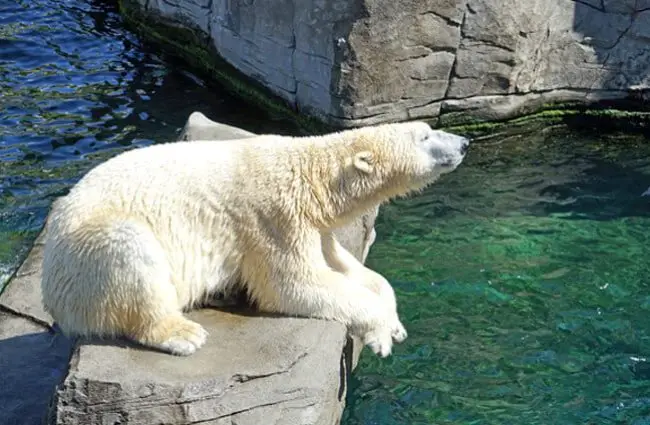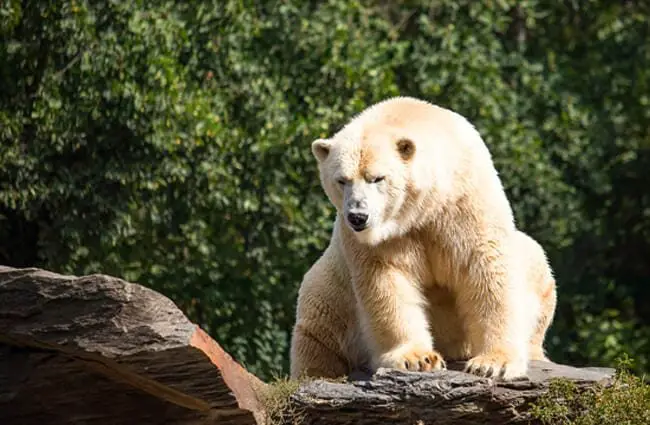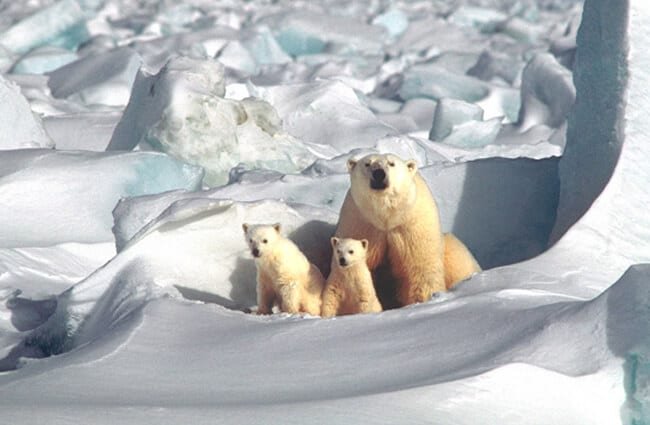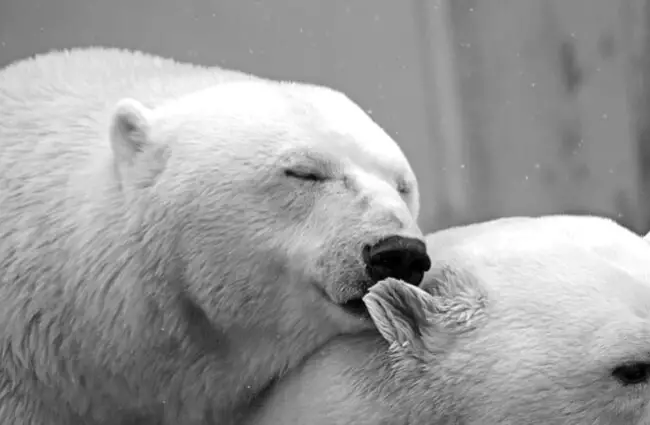The Arctic, a realm of breathtaking beauty and formidable challenges, is home to one of Earth’s most iconic and magnificent predators: the Polar Bear, or Ursus maritimus. This apex hunter, perfectly adapted to its icy domain, captivates imaginations worldwide, embodying both the raw power and the delicate balance of the polar ecosystem. From its impressive hunting prowess to its intricate social behaviors, the Polar Bear offers a window into the wonders of natural selection and the urgent need for conservation.
For centuries, these majestic creatures have roamed the vast expanses of sea ice, a testament to their incredible resilience. Understanding the Polar Bear is not merely an academic exercise; it is a journey into the heart of the Arctic itself, revealing the interconnectedness of life in one of the planet’s most extreme environments.

The Arctic Wanderer: Habitat and Distribution
Polar Bears are uniquely adapted to life in the Arctic, a circumpolar region encompassing the northernmost parts of North America, Europe, and Asia. Their primary habitat is the sea ice, which serves as a crucial platform for hunting seals, their main prey. These incredible animals are found across five nations:
- Canada
- Russia
- Greenland (Denmark)
- Norway
- The United States (Alaska)
While they are often associated with vast, desolate landscapes, Polar Bears exhibit a remarkable adaptability, navigating both stable pack ice and coastal areas. Their movements are largely dictated by the seasonal ebb and flow of the sea ice, which is essential for their survival. As the ice melts in summer, some populations move onto land, while others follow the retreating ice edge.
A Masterpiece of Evolution: Physical Characteristics and Adaptations
The Polar Bear’s physical attributes are a marvel of natural engineering, honed over millennia to thrive in subzero temperatures and icy waters.
Size and Stature
Polar Bears are the largest terrestrial carnivores on Earth. Adult males, known as boars, can weigh between 350 to 600 kilograms (770 to 1,320 pounds) and stand up to 3 meters (10 feet) tall on their hind legs. Females, or sows, are typically smaller, weighing 150 to 250 kilograms (330 to 550 pounds). Their immense size is a significant advantage for heat retention and provides the strength needed to tackle large prey.

The Iconic White Coat
Despite their common name, a Polar Bear’s fur is not actually white. Each hair is a hollow, translucent tube that reflects visible light, creating the illusion of whiteness. This brilliant camouflage allows them to blend seamlessly with their snowy surroundings, an invaluable asset for stalking prey. Beneath this dense outer coat lies a thick layer of underfur, providing exceptional insulation. Over time, particularly with age or exposure to certain environments, the fur can acquire a yellowish tint due to oxidation or staining from oils and debris.

Built for the Cold
Beyond their fur, Polar Bears possess several other critical adaptations:
- Blubber: A thick layer of subcutaneous fat, up to 11 centimeters (4.3 inches) thick, provides insulation and serves as an energy reserve during periods of food scarcity.
- Paws: Large, broad paws with rough, non-slip pads and short, strong claws offer excellent traction on ice and snow. Their partially webbed toes also aid in swimming.
- Small Ears and Tail: These features minimize heat loss, a common adaptation in Arctic mammals.
- Powerful Sense of Smell: Polar Bears can detect seals from nearly 30 kilometers (18 miles) away and even under a meter of snow.
The Apex Predator’s Menu: Diet and Hunting Strategies
Polar Bears are hypercarnivores, meaning their diet consists almost exclusively of meat. Their survival hinges on a high-fat diet, which provides the immense energy needed to sustain their large bodies in a cold environment.
Primary Prey
The cornerstone of the Polar Bear diet is the ringed seal, followed by bearded seals. These fatty marine mammals provide the necessary calories and nutrients. Other prey items can include:
- Harp seals
- Hooded seals
- Walruses (especially young or injured individuals)
- Beluga whales (occasionally, particularly carcasses)
- Narwhals (rarely)
Hunting Techniques
Polar Bears employ a variety of sophisticated hunting strategies:
- Still-Hunting: The most common method involves waiting patiently by a seal’s breathing hole in the ice. When a seal surfaces, the bear quickly pounces, crushing its skull with a powerful bite.
- Stalking: Bears will slowly and stealthily approach seals resting on the ice, using snowdrifts for cover, before launching a final charge.
- Stalking Dens: During spring, Polar Bears locate seal pupping lairs beneath the snow and crash through the roof to capture the vulnerable pups.
- Scavenging: They readily consume carrion, such as whale carcasses, which can provide a substantial meal for many bears.
While primarily carnivores, Polar Bears are opportunistic. During periods of food scarcity on land, particularly in summer, they may consume berries, kelp, bird eggs, or even reindeer, though these provide minimal nutritional value compared to seals.
A Legacy of Ice: Evolution and Ancestry
The evolutionary journey of the Polar Bear is a compelling tale of rapid adaptation to an extreme environment. Genetic evidence suggests that Polar Bears diverged from their closest living relative, the brown bear (Ursus arctos), relatively recently, approximately 150,000 to 500,000 years ago during the Pleistocene epoch.
This relatively short evolutionary timeline highlights the incredible speed at which natural selection can drive significant morphological and physiological changes. Key evolutionary adaptations include:
- Specialized Diet: A shift from an omnivorous diet to a hypercarnivorous one, focusing on high-fat marine mammals.
- Thermoregulation: Development of thick fur, blubber, and a compact body shape to minimize heat loss.
- Locomotion: Evolution of large, paddle-like paws for efficient movement on ice and swimming.
- Metabolic Adaptations: A unique ability to process large amounts of fat without developing cardiovascular disease, a trait that is currently being studied for its potential human health implications.
Early Polar Bears likely migrated north from ancestral brown bear populations, gradually adapting to the expanding Arctic ice sheets during glacial periods. Their success in colonizing and dominating this harsh environment is a testament to their remarkable genetic plasticity.
Life Cycles in the Cold: Mating and Reproduction
The reproduction cycle of Polar Bears is a testament to their resilience, with a strong emphasis on maternal care in a challenging environment.
Mating Season
Mating typically occurs on the sea ice between April and June. Males and females may travel long distances to find a mate. During this period, males may engage in fierce competition for access to females.
Delayed Implantation
Polar Bears exhibit a fascinating reproductive strategy known as delayed implantation. After mating, the fertilized egg (blastocyst) does not immediately implant in the uterine wall. Instead, it floats freely for several months. Implantation usually occurs in the fall, around September or October, allowing the cubs to be born at an optimal time for survival.
Denning and Birth
Pregnant females seek out suitable denning sites on land or stable multi-year ice in late October or November. These dens are often dug into snowdrifts, providing insulation from the extreme cold. Cubs are typically born in December or January, usually in litters of one to three, with twins being most common. At birth, cubs are tiny, blind, toothless, and covered in fine fur, weighing only about 600 grams (1.3 pounds).

Maternal Care and Cub Development
The mother and cubs remain in the den until March or April. During this time, the cubs grow rapidly, nourished by their mother’s rich milk, which can be up to 33 percent fat. The mother does not eat during this period, relying entirely on her fat reserves. When they emerge, the cubs are much larger, weighing around 10 to 15 kilograms (22 to 33 pounds), and are ready to face the Arctic world. They will stay with their mother for approximately two to three years, learning essential survival skills such as hunting and navigating the ice. This extended period of maternal care is crucial for their development and future success.
The Arctic’s Keystone: Ecosystem Role and Interactions
As the apex predator of the Arctic marine ecosystem, the Polar Bear plays a vital role in maintaining ecological balance.
Top-Down Control
Polar Bears exert top-down control on seal populations. By preying on seals, they help regulate their numbers, which in turn can influence fish populations that seals consume. This cascading effect highlights their importance in the food web.
Scavenging and Nutrient Cycling
While primarily hunters, Polar Bears are also significant scavengers. Carcasses of whales or other large marine mammals provide crucial food sources, especially during lean times. This scavenging contributes to nutrient cycling, returning organic matter to the ecosystem.
Interactions with Other Animals
- Arctic Foxes: Often follow Polar Bears to scavenge on their kills, benefiting from the bear’s hunting prowess.
- Seals: The primary prey, their lives are intrinsically linked to the presence of Polar Bears.
- Walruses: While adult walruses are formidable, Polar Bears may prey on young or vulnerable individuals.
- Gulls and other Seabirds: Also scavenge on Polar Bear kills.
The health of Polar Bear populations is a strong indicator of the overall health of the Arctic marine environment.
Giants and Humans: Cultural Significance and Interactions
For millennia, Polar Bears have held a profound place in human culture, particularly among Indigenous peoples of the Arctic, and their interactions with humans continue to evolve.
Cultural Significance
Indigenous communities, such as the Inuit, Yup’ik, and Inupiat, have long revered the Polar Bear, known as “Nanook” in many Inuit dialects. It is seen as a powerful spirit animal, a symbol of strength, endurance, and respect for the harsh Arctic environment. Traditional knowledge about Polar Bear behavior, hunting, and survival has been passed down through generations, forming an integral part of their cultural identity and subsistence practices.

Modern Interactions and Challenges
As human presence in the Arctic increases, so do interactions with Polar Bears. These encounters can be complex:
- Tourism: Wildlife tourism, particularly in places like Churchill, Manitoba, offers incredible opportunities for people to observe Polar Bears in their natural habitat, fostering appreciation and conservation efforts.
- Subsistence Hunting: Regulated subsistence hunting by Indigenous communities continues in some areas, managed to ensure sustainability and cultural continuity.
- Conflict: As sea ice diminishes, bears spend more time on land, leading to increased encounters with human settlements. This can result in property damage, injuries, or even fatalities, posing significant challenges for both bears and people.
- Conservation: Climate change is the most significant threat to Polar Bears, directly impacting their sea ice habitat. This has led to their classification as a vulnerable species and extensive international conservation efforts.
Seeking the White Wanderer: Finding Polar Bears in the Wild
For the dedicated animal lover or aspiring zoologist, observing Polar Bears in their natural habitat is an unparalleled experience. However, it requires careful planning and respect for their environment.
Prime Viewing Locations
Several regions offer excellent opportunities for Polar Bear viewing:
- Churchill, Manitoba, Canada: Known as the “Polar Bear Capital of the World,” Churchill offers guided tours via specialized tundra buggies, particularly in October and November when bears gather awaiting the freeze-up of Hudson Bay.
- Svalbard, Norway: This Norwegian archipelago in the Arctic Ocean is a prime location for expedition cruises. Bears can be spotted on sea ice, along coastlines, and on islands during the summer months.
- Greenland: Remote and wild, East Greenland offers opportunities for sightings, often as part of expedition cruises.
- Alaska, USA: Remote areas like Kaktovik and Barrow (Utqiagvik) offer chances to see bears, often with local guides, particularly when bears come ashore to feed on whale carcasses.
How to Find One Safely
- Join a Reputable Tour: This is the safest and most responsible way to observe Polar Bears. Experienced guides know how to locate bears without disturbing them and ensure human safety.
- Respect Distance: Always maintain a safe and respectful distance from any wildlife. Never approach a Polar Bear.
- Be Prepared for Cold: Arctic conditions are extreme. Dress in multiple layers of warm, waterproof clothing.
- Patience is Key: Wildlife sightings are never guaranteed. Enjoy the entire Arctic experience.
Encountering a Polar Bear: Safety Protocols for Hikers
While rare for most hikers, anyone venturing into Polar Bear territory must be prepared for a potential encounter. These are powerful, unpredictable predators, and safety is paramount.
Prevention is the Best Strategy
- Travel in Groups: Bears are less likely to approach larger groups.
- Make Noise: Talk loudly, sing, or use bear bells to announce your presence and avoid surprising a bear.
- Be Aware of Your Surroundings: Scan your environment constantly, looking for tracks, scat, or the bear itself.
- Avoid Attractants: Store all food, garbage, and scented items in bear-proof containers or hung from trees. Never leave food unattended.
- Carry Deterrents: Bear spray (ensure it is cold-weather rated), air horns, or flare guns can be effective deterrents. Know how to use them.
If an Encounter Occurs
- Remain Calm: Panicking can provoke a bear.
- Do NOT Run: Running can trigger a chase response. Polar Bears are incredibly fast.
- Make Yourself Look Large: Stand tall, wave your arms, and make noise.
- Back Away Slowly: Give the bear space to leave. Do not turn your back.
- Use Deterrents: If the bear approaches aggressively, use your bear spray or other deterrents. Aim for the bear’s face.
- Fight Back: If a Polar Bear attacks, fight back aggressively with anything you have. Aim for the face and eyes.
Always remember that a Polar Bear is a wild animal, and its behavior can be unpredictable. Your safety and the bear’s well-being depend on responsible actions.
Caring for Giants: A Zookeeper’s Guide to Polar Bear Welfare
Caring for Polar Bears in captivity is a specialized and demanding role, requiring extensive knowledge and dedication to animal welfare. Zookeepers play a crucial role in providing a stimulating and healthy environment for these magnificent animals, while also educating the public.
Essential Zookeeper Tasks
- Habitat Design and Maintenance:
- Spacious Enclosures: Polar Bears require large, complex habitats with ample space for swimming, climbing, and exploring.
- Temperature Control: Exhibits must maintain cool temperatures, often with chilled water pools and cooled dens, to mimic their natural Arctic environment.
- Substrate Variety: Providing different substrates like rock, soil, and even artificial snow or ice encourages natural behaviors.
- Cleanliness: Regular cleaning and sanitation are vital to prevent disease.
- Nutritional Management:
- Specialized Diet: A diet rich in protein and fat is essential, typically consisting of fish (herring, mackerel), lean meats, and specialized carnivore biscuits, supplemented with vitamins and minerals.
- Feeding Schedules: Multiple feedings throughout the day can mimic natural foraging patterns.
- Monitoring: Close monitoring of weight and body condition is crucial to prevent obesity or malnourishment.
- Enrichment and Behavioral Stimulation:
- Environmental Enrichment: Providing toys, puzzle feeders, ice blocks, and novel scents encourages natural behaviors like foraging, playing, and exploring.
- Training: Positive reinforcement training for husbandry behaviors (e.g., voluntary blood draws, weighing) reduces stress and facilitates veterinary care.
- Social Opportunities: For some bears, carefully managed social groupings can provide enrichment, though many are solitary.
- Health Monitoring and Veterinary Care:
- Daily Observations: Zookeepers meticulously observe bears for any changes in appetite, behavior, or physical condition.
- Preventative Care: Regular veterinary check-ups, vaccinations, and parasite control are standard.
- Research Contribution: Zoos often participate in research to improve captive care and contribute to conservation efforts for wild populations.
- Public Education:
- Interpretation: Zookeepers educate visitors about Polar Bear biology, conservation challenges, and the importance of protecting their Arctic habitat.
- Ambassador Animals: Captive bears serve as ambassadors, inspiring empathy and action for their wild counterparts.
What to Avoid
- Human Food: Never feed Polar Bears human food, which can be detrimental to their health.
- Stressors: Minimize loud noises, sudden movements, or excessive public disturbance that can cause stress.
- Lack of Enrichment: A barren enclosure without enrichment leads to boredom and stereotypic behaviors.
- Inadequate Space: Small enclosures are unacceptable for such large, active animals.
- Ignoring Behavioral Cues: Zookeepers must be highly attuned to a bear’s body language and adjust care accordingly.
Fascinating Facts About Polar Bears
The world of the Polar Bear is full of incredible details that highlight their unique place in the animal kingdom.
- Not Truly White: As mentioned, their fur is translucent, appearing white due to light reflection. Their skin underneath is actually black, which helps absorb solar radiation.
- Excellent Swimmers: Polar Bears are classified as marine mammals. They can swim for hours at a time, using their large front paws as paddles and their hind legs as rudders. They can hold their breath for over a minute underwater.
- Overheating Risk: Despite living in the cold, Polar Bears can actually overheat, especially when running or during warmer periods, due to their incredible insulation.
- Solitary Lives: Except for mothers with cubs and during mating season, Polar Bears are generally solitary animals.
- Long Lifespan: In the wild, Polar Bears typically live for 15 to 18 years, though some can live into their early 30s. In captivity, they can live even longer.
- Powerful Sense of Smell: Their olfactory sense is so acute that they can smell a seal on the ice from nearly 30 kilometers away, or even a seal den buried under a meter of snow.
- Walking on Ice: Their large, textured paws act like snowshoes and provide excellent grip on slippery ice.
- Global Population: The estimated global Polar Bear population is around 26,000 individuals, distributed across 19 subpopulations.

Conclusion: Guardians of the Arctic
The Polar Bear stands as a powerful symbol of the Arctic’s wild beauty and its vulnerability. From its remarkable evolutionary journey and specialized adaptations to its critical role as an apex predator, every aspect of its existence is intertwined with the health of the polar environment. As climate change continues to impact their sea ice habitat, the future of these magnificent creatures rests heavily on human actions.
By understanding their biology, respecting their power, and supporting conservation efforts, humanity can play a vital role in ensuring that the white wanderers of the North continue to thrive for generations to come. The Polar Bear is more than just an animal; it is a living testament to nature’s ingenuity and a poignant reminder of our responsibility to protect the planet’s most fragile ecosystems.

![Red Angus Closeup of a beautiful Red Angus cowPhoto by: U.S. Department of Agriculture [pubic domain]https://creativecommons.org/licenses/by/2.0/](https://animals.net/wp-content/uploads/2020/03/Red-Angus-4-238x178.jpg)




![Red Angus Closeup of a beautiful Red Angus cowPhoto by: U.S. Department of Agriculture [pubic domain]https://creativecommons.org/licenses/by/2.0/](https://animals.net/wp-content/uploads/2020/03/Red-Angus-4-100x75.jpg)

